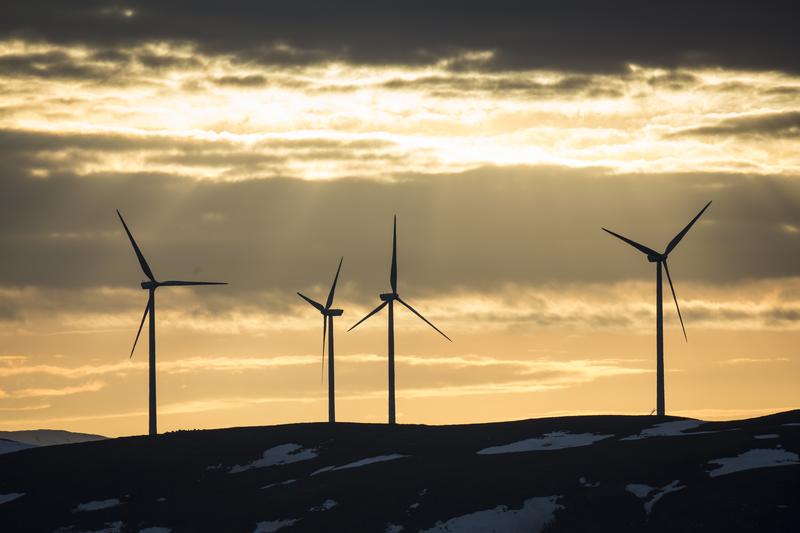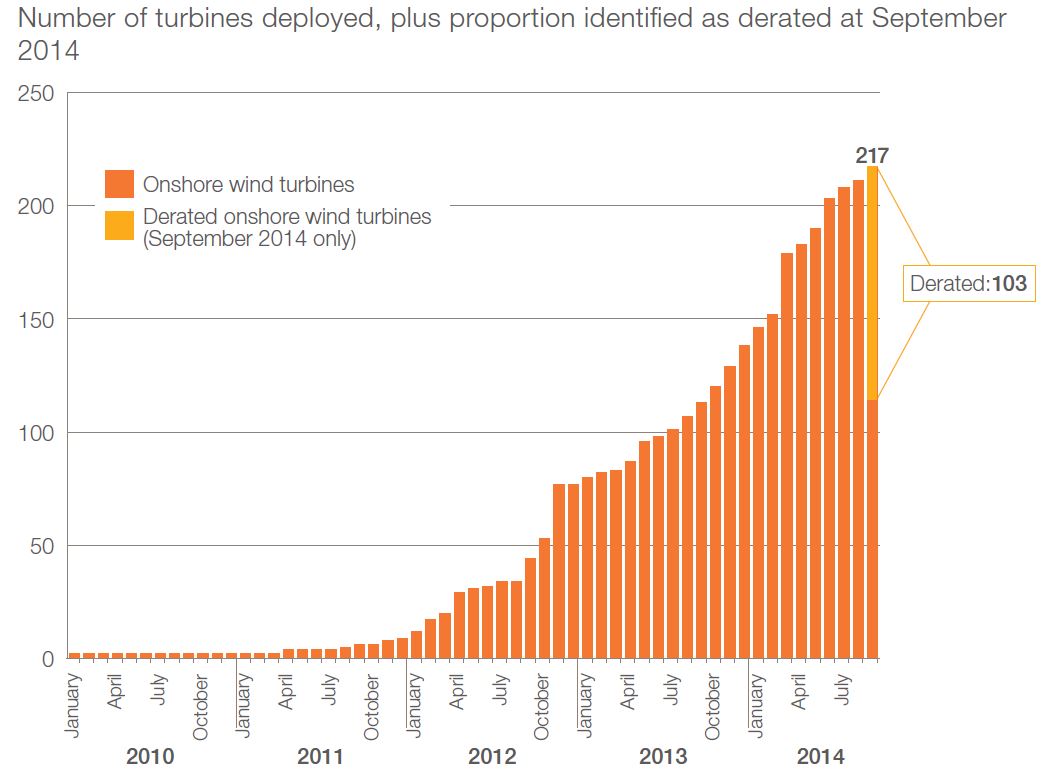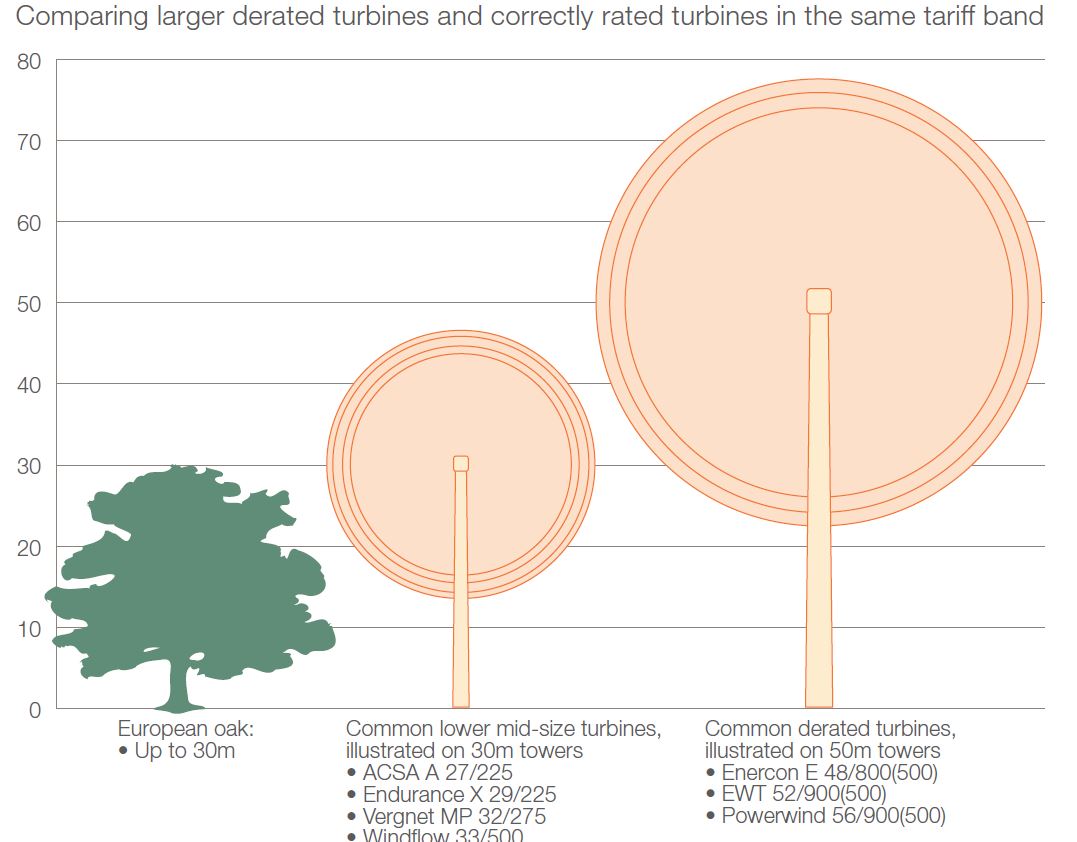Wind energy subsidy loophole exploited to the tune of £175 million, report says

A major loophole in the UK’s wind energy subsidy scheme is costing the clean energy sector hundreds of millions of pounds in government investment, according to a new report by think tank IPPR.
The report found that the loophole could also be limiting generation from wind— potentially leading to higher carbon emissions.
More than 100 medium-to-large wind turbines across the country are generating less energy than they’re capable of as installers claim superior subsidies offered to smaller turbines as part of the Feed-in-Tariff (FiT) initiative.
The government says the issue is being investigated but said the report was based on “second-hand” information.
Derated turbines
These ‘derated’ turbines have reportedly already cost British billpayers £175 million, and that figure could reach £400 million by the scheme’s end in 2020 if the loophole is not closed this year, IPPR said.
This FiT funding was provided at the expense of other low-carbon schemes under the levy-control-framework (LCF) that capped the total amount the government can invest in energy initiatives.
The report comes days after energy giant RWE claimed that UK planning precedents are preventing the construction of more efficient wind turbines.

Report row
The numbers in the report haven’t been accepted by ministers.
“This report is based on incorrect and second-hand information – the numbers just don’t add up, ” a spokesperson for the Department of Energy and Climate change said.
“We keep this issue under constant review to make sure consumers are getting the best possible deal, and an in-depth investigation is currently underway,” he added.
IPPR responded that: “the numbers in this report were reviewed by independent energy consultants who themselves advise the government, and one of this report’s authors himself advised the Energy Minister with responsibility for this scheme. We stand by our report.”
Since its introduction in 2010, the FiT has provided backing to small-scale clean energy projects, with the level of financial support determined by the project’s maximum generation potential.
All this for six pence (but it adds up)
Using money from consumers, the mechanism provides 13.34p per kWh to wind turbines that generate up to 500kW, but gives 6p less per kWH to the next band higher — generation capacity between 500 and 1500kW.
To claim the greater per kWh subsidy, a growing number of turbine installers – those with only one or two installations – are cutting off generation at the 500kW threshold.
The scheme, originally conceived so that low-carbon projects would receive a 5-8% rate of return, has enabled some derated turbines to post returns as high as 25%.
Ultimately, however, the loophole could harm the wind sector by reducing the amount of power generated from wind and leading to an inefficient allocation of limited support.
The analysis found that the UK has missed out on an additional 27MW of clean energy due to these derated tubrines which, because of their increased size, can reach better, higher winds.
In short the loophole may have driven up carbon emissions.
Industry organisation RenewableUK has objected to some of the assumptions in the IPPR report, claiming it “doesn’t take account of the legitimate reasons” for derating — like how “it may be necessary because of limits in the capacity of the grid to cope with the amount of electricity that’s being generated”.
In a statement, RenUK’s Deputy Chief Executive Maf Smith stressed that the vast majority of the country’s onshore wind turbines are compliant with regulations: “It’s worth remembering that we’re talking here about 103 operational turbines at the most. That’s less than 1% of the 12,000 small, medium and large-scale onshore wind turbines generating in the UK.”

You can’t make them bigger
It’s not just the illusion of small turbines that’s hurting the wind sector, it’s difficulty building the big ones.
In an op-ed published on Politics Home, Michael Parker, Head of Onshore Development at RWE, said the government is blocking the construction of slightly taller turbines that have greater generation capability.
Enabling the blades to accessing higher, more consistent winds, those extra five metres could increase turbine energy generation by 10%.
Parker said: “Taller turbines can access better wind – that is, wind unaffected by low-level turbulence – and carry bigger blades. That reduces the number of wind turbines you need at a site, cutting manufacturing costs, but increasing the amount of electricity produced.
“Unfortunately planning precedents in the UK make it difficult for a wind turbine to be installed on land if it is more than 125 metres from base to tip, and mean we can’t buy from a standardised set across the European supply chain.”

